Doctoral Adventure: 400,000 Years of Climate Change Dr. des. Rodrigo Martínez-Abarca on his Research in Central America
Lake Petén Itzá in Guatemala harbors information about climate and environmental changes from the past 400,000 years. Dr. des. Rodrigo Martínez-Abarca investigated these hidden records in lake-bottom sediments as part of his doctoral research at the Institute of Geosystems and Bioindication of TU Braunschweig. Here, he shares insights from his study into the secrets of lake sediments.
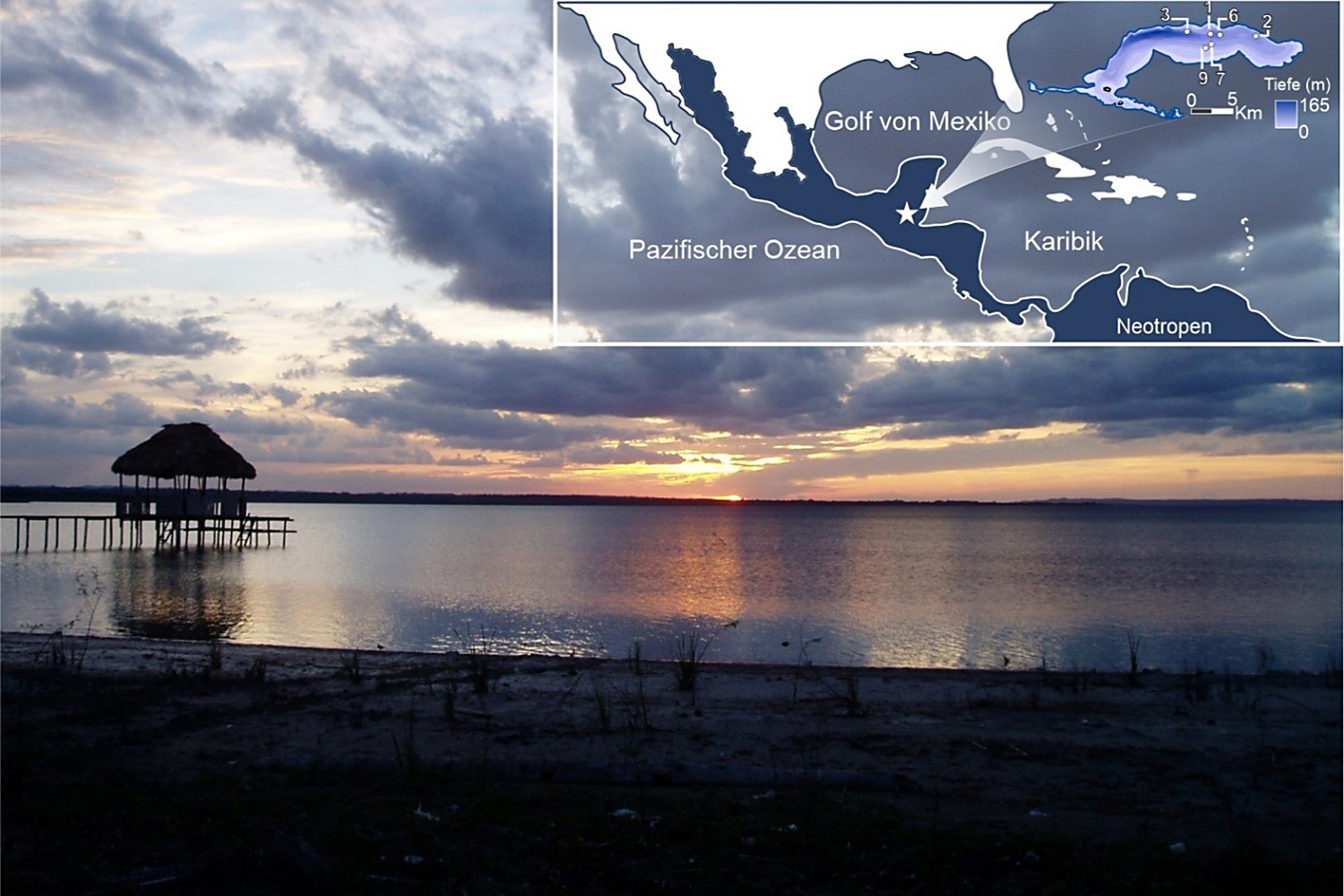
Lake Petén Itzá and a map view showing the location of Lake Petén Itzá and the sediment core drilling sites. Picture credits: Mark Brenner
Three years ago, my colleague Dr. Liseth Pérez introduced our upcoming research project at the Institute for Geosystems and Bioindication (IGeo) at TU Braunschweig. The central research question of the project was: “How has the climate in the tropical regions of North and Central America changed over the last 135,000 years?”. A few months before her article was published, I embarked on what I call my “doctoral adventure.” Together with my supervisor Professor Antje Schwalb, Professor Thorsten Bauersachs (RWTH Aachen), and several international colleagues, we set out to find answers. Our research focused on sediment cores from Lake Petén Itzá, located in the lowlands of northern Guatemala. In the end, we reconstructed climate and environmental changes in the region over the past 400,000 years.
Temporal Scales of Climate Change
Lake Petén Itzá stores information in its sediments about climate and environmental changes over the past 400,000 years, making it the oldest terrestrial climate archive in the lowlands of the Neotropics. In 2006, scientists, as part of the “International Continental Scientific Drilling Program” (ICDP), with support from institutions in Europe (Swiss National Science Foundation) and the USA (US-NSF), extracted sediment cores from this lake. Over the past 20 years, several studies have been published focusing on the paleoclimate and paleoenvironment of the region during the last 80,000 years. My doctoral research extends this work by investigating regional climate and environmental changes on three timescales:
1) From 400,000 to 80,000 years ago, a period that includes four warm and cold phases (interglacial and glacial periods), each lasting around 40,000 years.
2) From 80,000 to 20,000 years ago, a period marked by precipitation changes recurring every 3,000 to 7,000 years, likely linked to shifts in Atlantic circulation.
3) The last 20,000 years, a period during which we reconstructed temperature and primary productivity changes in the lake, including the last major glacial advance (~23,000-19,000 years ago) and the Holocene (approximately 11,700 years to the present), with the first Maya settlements in the region, starting about 3,000 years ago.
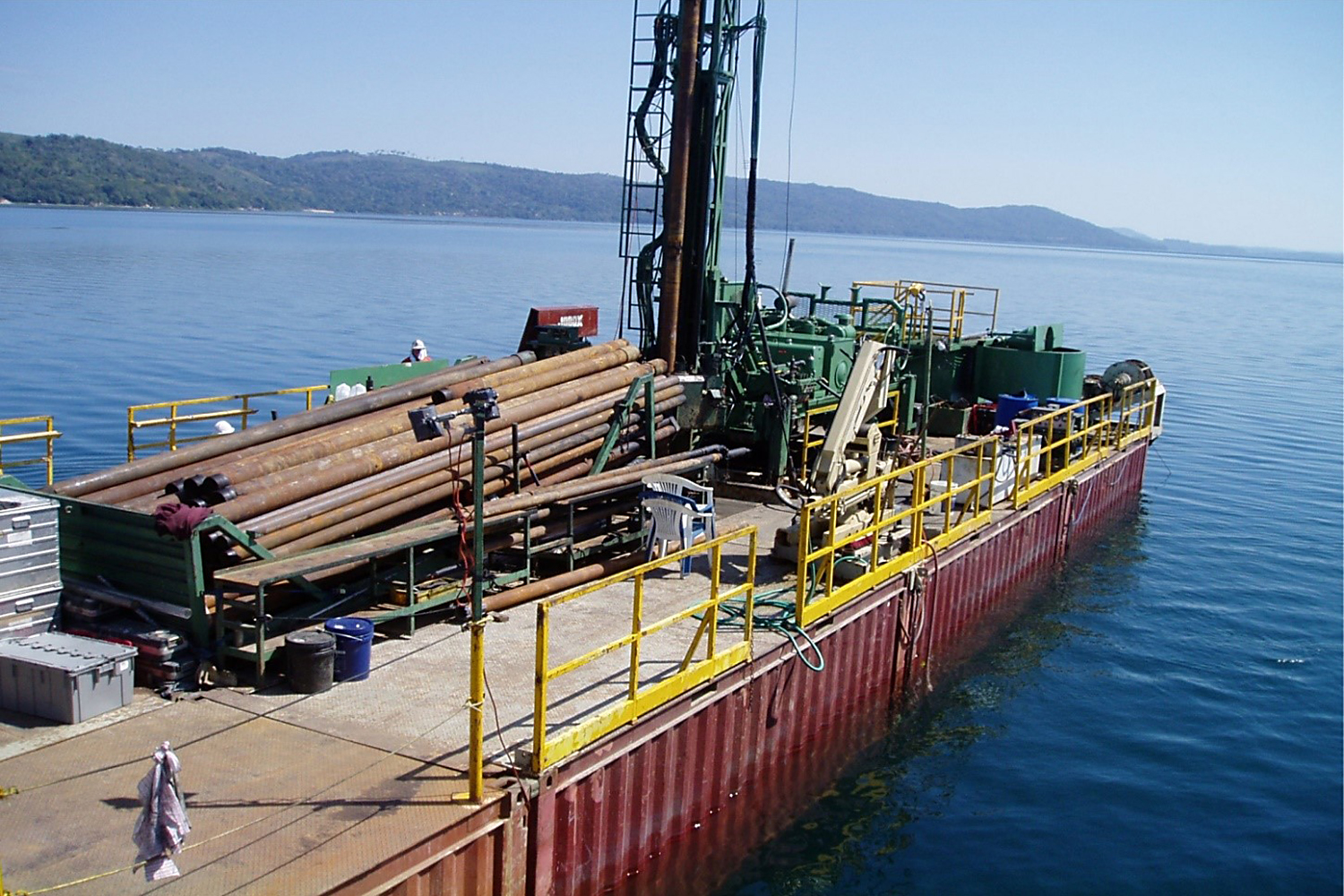
GLAD800 drilling platform used for sediment drilling in Lake Petén Itzá. Picture credits: Mark Brenner.
Ancient environmental changes in the region
During the study of ice cores from Greenland and Antarctica, paleoclimatologists discovered evidence of atmospheric temperature fluctuations over the past 400,000 years. This variability was attributed to changes in the tilt of the Earth’s axis during its orbit around the sun. Such long-term axial tilt changes are considered triggers for shifts in the global climate system.
By analyzing sediment cores from Lake Petén Itzá, we were able to identify local climate and environmental changes that aligned with global climate fluctuations. During warmer (interglacial) periods, increased rainfall caused the lake to deepen and nutrient concentrations in the water column to rise. Conversely, conditions in colder (glacial) periods were drier, leading to higher evaporation rates and a lower lake level. Our records also point to seismic activity in the region, as sediments from the period between 300,000 and 150,000 years ago are missing, suggesting that one or more seismic events eroded the sediment layers.
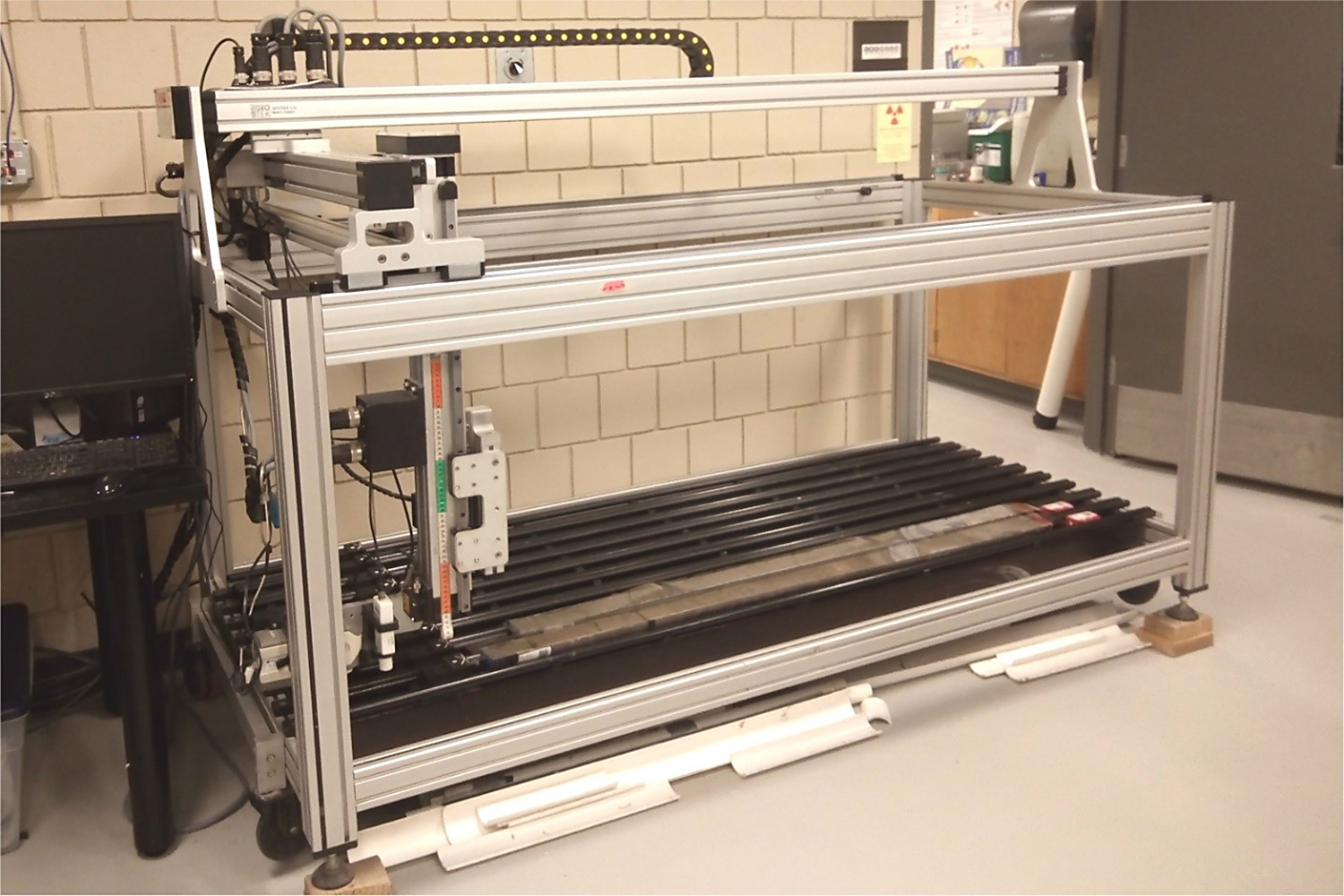
Automated X-ray fluorescence (XRF) equipment from the Continental Scientific Drilling (CSD) Facility at the University of Minnesota-Duluth (USA), used to measure inorganic geochemical elements (e.g., titanium or iron) in the sediments of Lake Petén Itzá. The photo shows cores from Lake Chalco in Mexico, measured in 2016. Picture credits: Dr. des. Rodrigo Martínez-Abarca/TU Braunschweig
Short-term decrease in precipitation
We focused on the period between 80,000 and 20,000 years before present and found distinct gypsum layers (calcium sulfate) that were deposited over a span of 3,000 to 5,000 years. These layers correspond to climate phenomena known as “Heinrich Stadials”. During these periods, many icebergs drifted into the North Atlantic, causing a slowdown in oceanic currents, particularly the Atlantic Meridional Overturning Circulation. Our research indicates that this slowdown in ocean circulation led to a reduced moisture supply from the Atlantic, which manifested in lower precipitation around Lake Petén Itzá, increased lake evaporation, and a lower water level, resulting in gypsum deposits on the lake bed. We suspect that the reduction in rainfall was likely exacerbated by the weakening of the Caribbean Low-Level Jet, a climate phenomenon that brings moisture-laden winds across the Caribbean. Although these dry periods (3,000-5,000 years) may seem short in geological time scales, they had profound impacts on the terrestrial and aquatic ecosystems of the lowland Neotropics.
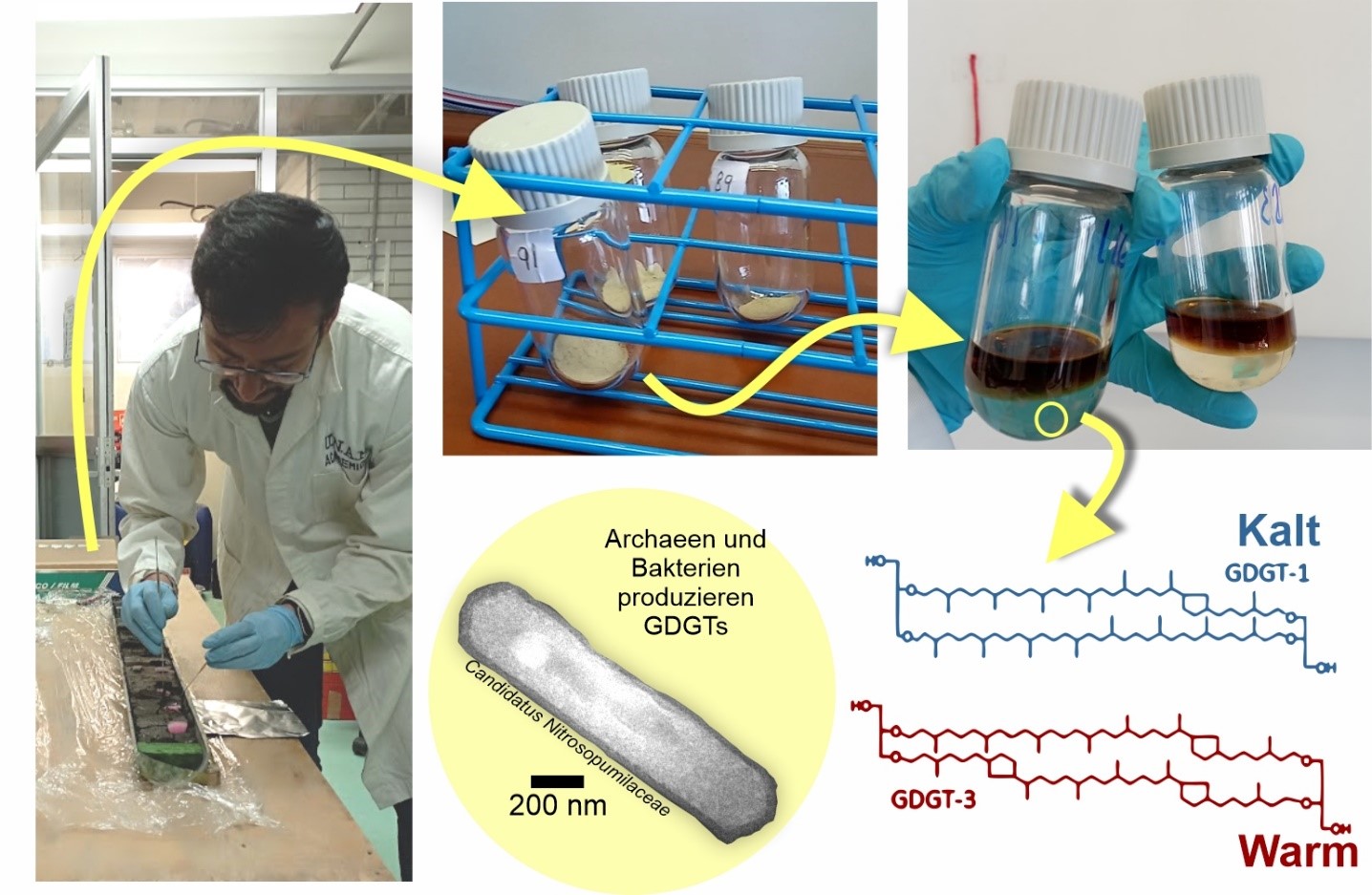
Extraction of Glycerol Dialkyl Glycerol Tetraethers (GDGTs) in the laboratory from sediment core samples, including drying and lipid extraction (personal photos). Two examples of GDGTs are shown. The type of molecule indicates whether the temperature was warmer or cooler. Example of an archaeal species that can produce GDGTs: Candidatus Nitrosopumilaceae from the phylum Thaumarchaeota. Picture credits: Dr. des. Rodrigo Martínez-Abarca/TU Braunschweig (adapted from Quin et al., 2016).
Temperature during the Holocene
The Holocene encompasses the last 11,700 years and represents the current warm period (interglacial), characterized by higher global temperatures compared to the Ice Age. Around 3,000 years ago, human settlement in the study area began. In the sediments of Lake Petén Itzá, we measured lipid indicators known as Glycerol Dialkyl Glycerol Tetraethers (GDGTs). GDGTs are membrane lipids produced by bacteria and archaea. The type of lipid produced is influenced by factors such as pH and temperature, making GDGTs valuable tools for determining past temperatures. Using this climate indicator, we discovered that temperatures increased by 3.5 to 4.1°C after the end of the last Ice Age, rising from 20.8°C to approximately 24.2°C at the start of the Holocene. This temperature increase, coupled with higher rainfall, significantly altered the plant life around the lake and increased the nutrient concentration in the lake water.
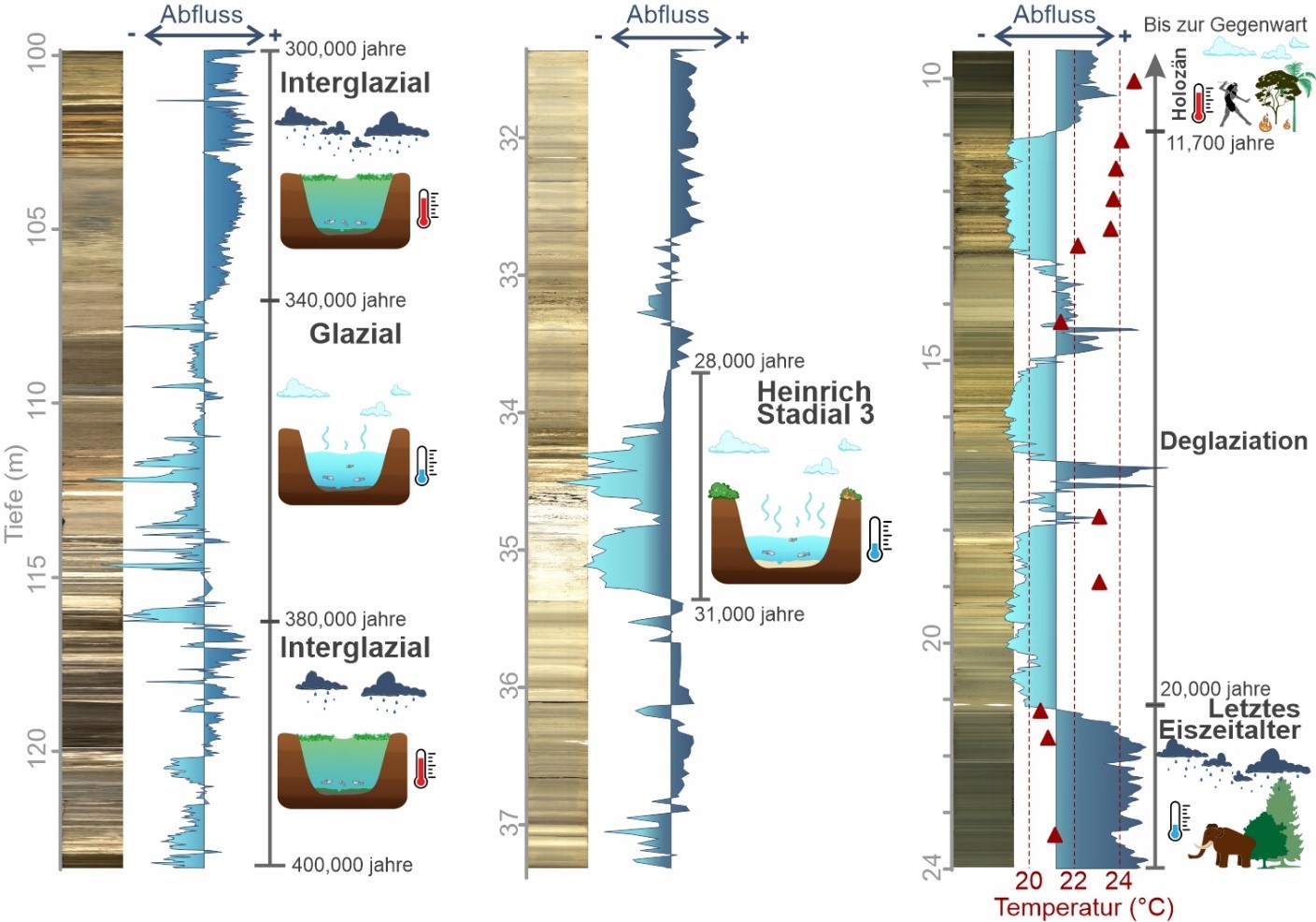
Runoff indicators from Lake Petén Itzá and high-resolution core photographs. Values are based on z-scores calculated for different drill sites. Magnitudes between time intervals are not comparable. Preliminary temperature reconstruction based on GDGTs for the Last Ice Age–Holocene transition. Climate and environmental reconstructions are shown. Image credit: Dr. des. Rodrigo Martínez-Abarca/TU Braunschweig
Questions for the future
Although my doctoral research has led to several new discoveries, it has also raised many new and interesting questions. Some of these questions are: What were the impacts of seismic activity in the region more than 300,000 years ago? What other climate and environmental changes might have left traces in the Lake Petén Itzá sediments during the oldest glacial-interglacial cycles? Can lipid indicators in sediments older than 20,000 years be used to infer past temperatures? If so, what temperatures did the region experience during earlier cold and warm periods? These and many other questions may be addressed in future research. For now, with this post, I conclude my doctoral adventure at TU Braunschweig.
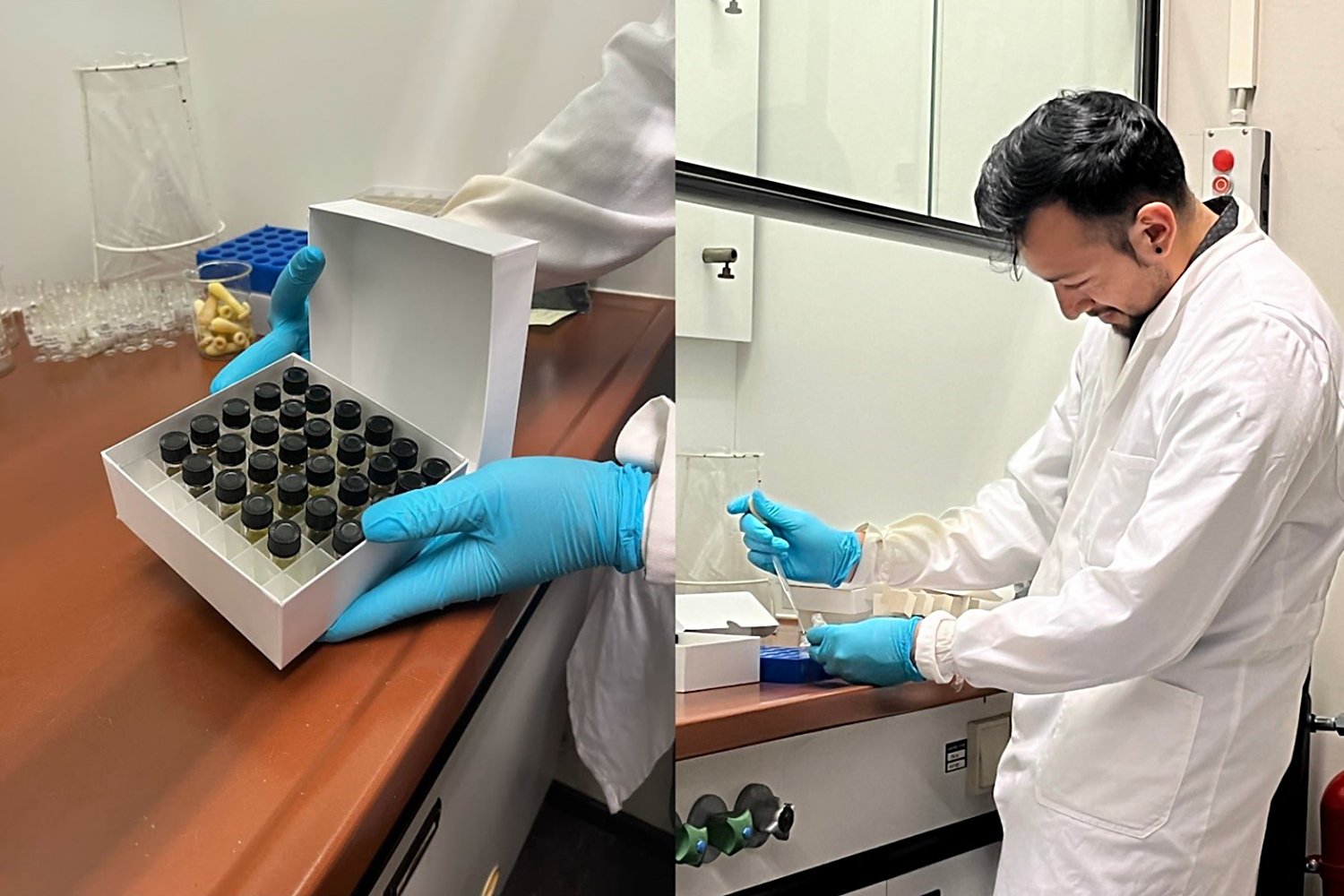
Laboratory work. The final extractions obtained at TU Braunschweig were subsequently processed by liquid chromatography for the quantification of GDGTs. Picture credits: Olaf Drewes
Text: Dr. des. Rodrigo Martínez-Abarca
